Media | Articles
1980 Mercury Cougar XR-7: Forgotten, but not gone
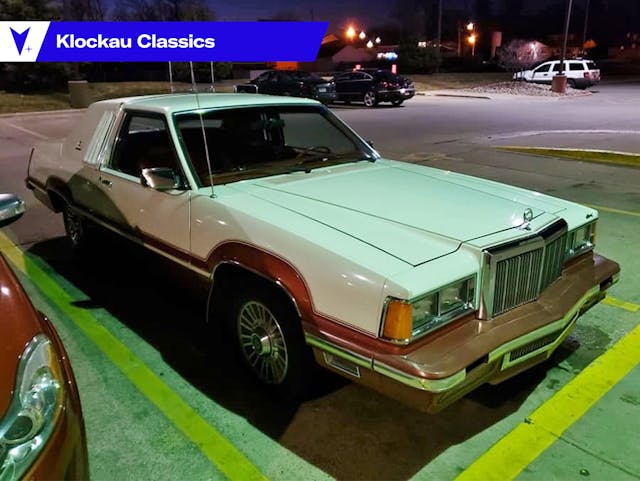
Most everyone who likes old cars remembers the Mercury Cougar. There were plenty of memorable ones, starting with the original, with its Schick electric razor grille, hidden headlights, and flossy interiors. The original XR-7 and 1969–70 Eliminator also held their own against its less-fancy but uber-successful sister Mustang and myriad other pony cars of that time. And the later luxo-cat 1974–76 and mini Mark V 1977–79 Cougars were solid sellers.
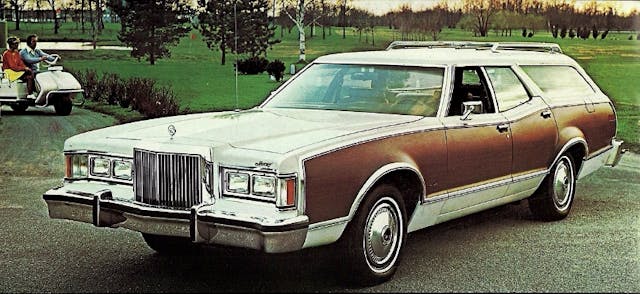
I remember, in particular, the 1977 Cougar Villager wagon, thanks to a Matchbox version attained as a yoot. I still have it too, though it’s a little rough. Yes, there was a Cougar station wagon and would be again in 1982, but that’s not our primary focus here today. Today is all about the mostly invisible and barely recalled 1980–82 XR-7.
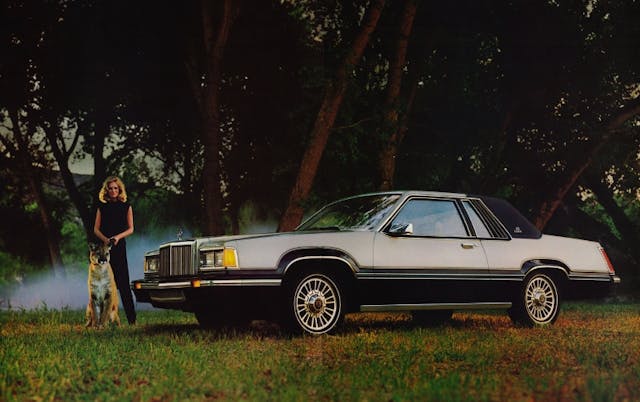
The 1980 model year was kind of a rough one for fans of both large luxocruisers and Ford Motor Company Products. The full-size LTD and Marquis had already been downsized the prior year (and the most excellent hidden headlights on the fancier models, dagnabit), but ’80 brought even more shrinkage, as George Costanza once said.
The Lincoln Continental and Continental Mark V, which had remained fully gigantic through 1979, became a freshly minted member of the new Panther chassis, shared with the full-sized Ford and Mercury. And the personal-lux Cougar and Thunderbird, which had been previously on the midsized LTD II/Cougar/Cougar XR-7 chassis, now moved to the Fox chassis, shared with the recently redone Mustang and corporate cousins Fairmont and Zephyr.

They were very noticeably smaller. The Cougar two-door and four-door sedans rode a 105.5-inch wheelbase and had an overall length of 196.5-inch, while the XR-7, as the dedicated personal luxury version (and available only as a coupe) rode a 108.4-inch span and length of 200.4 inches.
Marketplace
Buy and sell classics with confidence

The ’79 XR-7 had a 114-inch wheelbase and 215.5-inch length. But that was only the half of it, as the new car had a much less prominent long-hood, short-deck appearance.
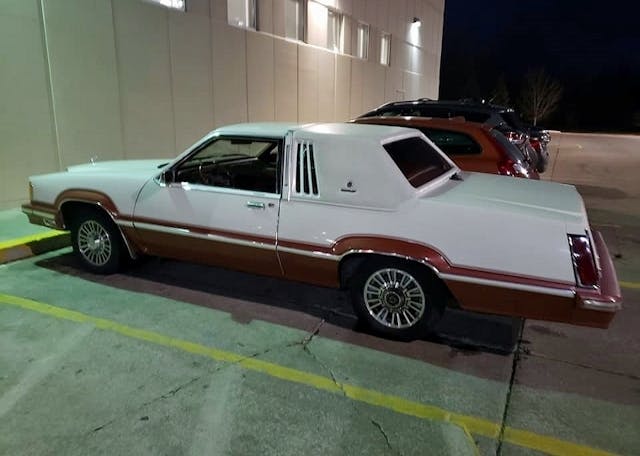
It was, well, rather square and stubby, at least compared to its immediate predecessor. But Ford made up for it in sheer number of options and luxury packages. These ’80–82 XR-7s and their Thunderbird brethren had some of the plushest interiors.
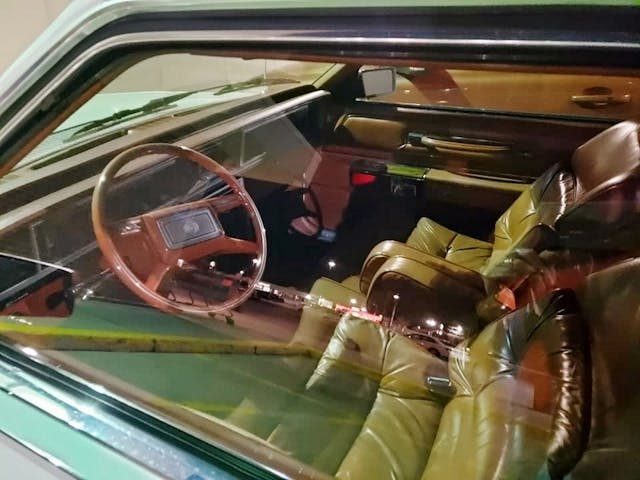
Simply called the Luxury Group, it included a padded landau roof with slatted opera window (as seen on our featured car), flush aero style remote controlled side view mirrors, cast aluminum wheels with whitewall tires (naturally), and color keyed vinyl side moldings.

But the real differences were seen inside, where Twin Comfort seating held sway in either plush velour or optional leather seating surfaces. Either way, you got poofy “floating pillow” style seat cushions and fancier door panel trim.

Other Luxury Group standards included 18-ounce carpeting, hood and trunklid accent striping, power windows, plush trunk carpeting, and a passenger-side lighted visor vanity mirror.
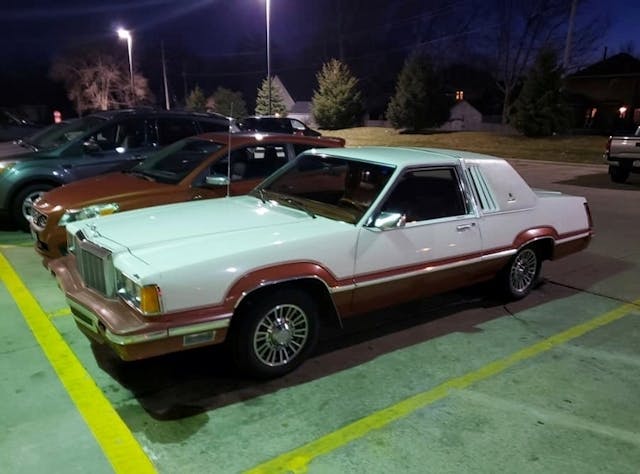
The 1980 Cougar XR-7 based at $7045 before options, had a curb weight of 3191 pounds, and 58,028 were built for the model year. That was kind of a letdown, as in 1979, 163,716 of the larger, more Broughamy Cougar XR-7s were built.

Although downsized for the second time in less than five years, all XR-7s had a V-8. Standard equipment was a 255-cubic-inch version with 115 horsepower; the evergreen 302 V-8 was optional and had 130 horses.
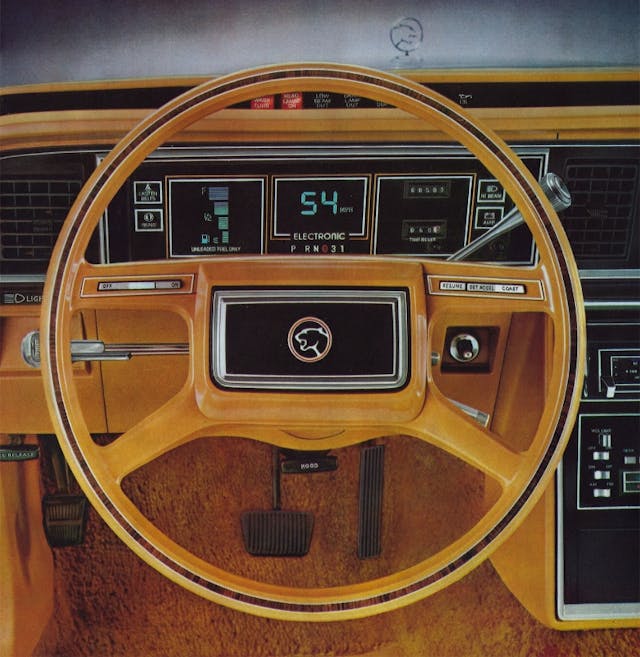
Other option packages for XR-7s included an electronic instrument panel (as seen above), Appearance Protection Group (with front floor mats, door edge guards, and license plate frames), Sports Group (consisting of Recaro front bucket seats, leather wrapped steering wheel, aluminum wheels with radial tires, 18-oz. carpeting, and two-tone paint, among other refinements).

The usual power accessories were available as standalone options as well, like windows, door locks, seats, trunk release, and antenna. Wire wheel covers, Luxury wheel covers, and the same alloys standard with the Luxury and Sports Decor options, speed control, AM/FM stereo with cassette player and AM/FM stereo with a 40-channel CB radio were just a few of the extras.

As low as production was for 1980, it was the highwater mark for this generation of Cougar. Production of the XR-7 alone for 1981 (though it was joined by Cougar two-door and four-door sedans this year) was 37,275 units.
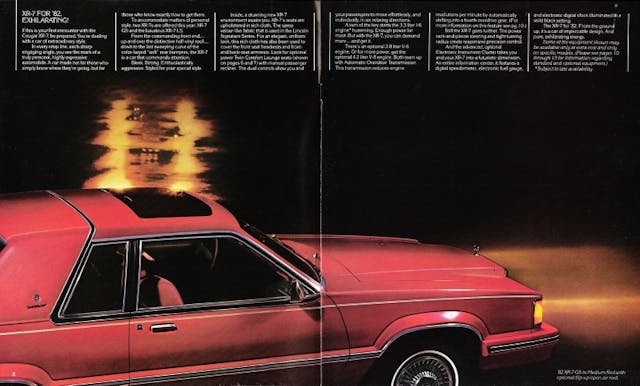
It only got worse in ’82 with only 16,867 XR-7s sold. That was also the year a Cougar wagon was added.

Like the ’77 Cougar Villager, it was a one-year only model. After this ’82, Cougars would return to two-door only variants for the duration of the nameplate. Unless you count the final 1999–2002 sporty, totally non-Broughamy Cougar hatchback version as a three-door. But no more Cougar wagons, woody or otherwise, would appear in Lincoln-Mercury showrooms.

Today they are virtually extinct. I’d last seen one in the wild perhaps in the late ’90s, but my brother Andy spotted today’s burnt-orange and white example while leaving the grocery store in March 2019. He is a fellow car nut and knew I’d go nuts if I’d seen it myself, so he snapped several pictures with his phone and texted them to me. I responded by doing a MAJOR double take. This one appeared to be in fine condition, a true survivor. I knew I had to share it eventually, and today, over two years later, I finally got around to it.

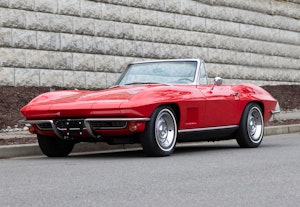

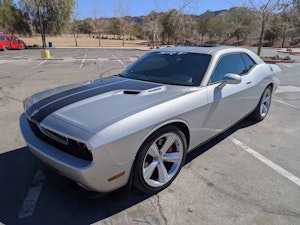
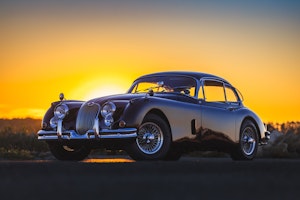
























I have a 1980 cougar xr7 2 Dr with original 302. Does these cars have a solid frame?
Reet